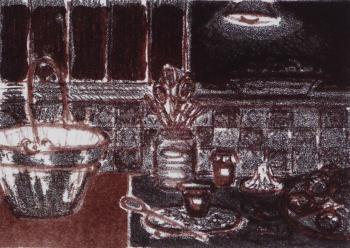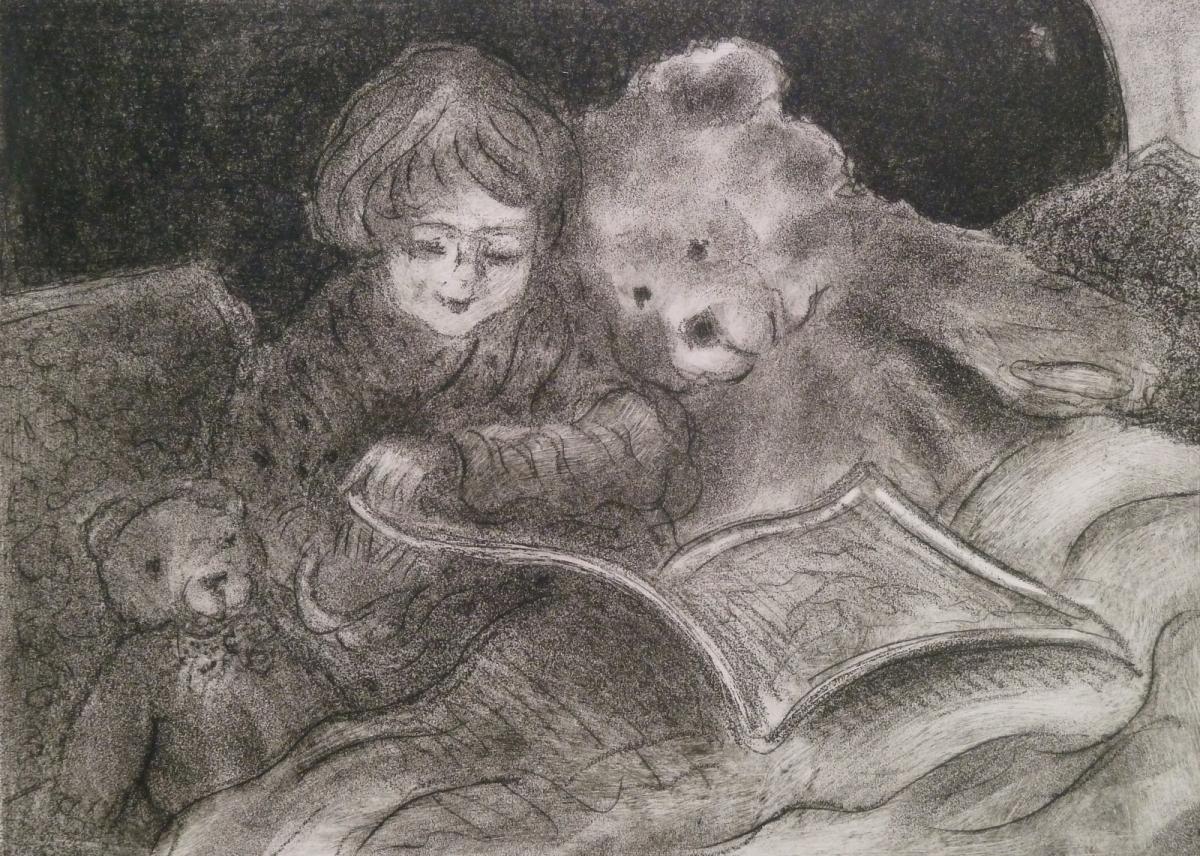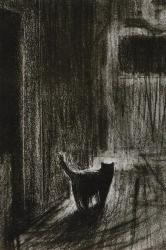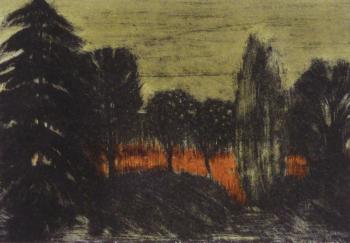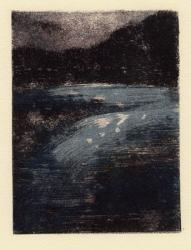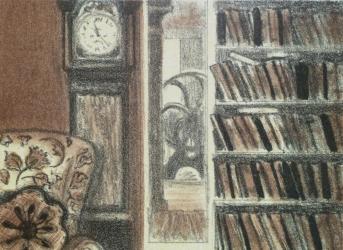What is Stone Lithography?
Stone lithography is an exciting if sometimes challenging medium. Its strength is that it captures the immediacy of a drawing and is also a wonderful medium for exploring the use of colour.
The process is based on the principle that grease and water will not mix. Prints are taken directly from the surface of the lithographic stone (usually Bavarian limestone). The artist draws on the stone with greasy lithographic crayons and tusches. The surface is then treated with an etch so that only the drawn image will accept the printing ink.
To print the image the stone is kept damp. The printing ink is applied with a roller and will adhere to the drawing, being repelled by the wet parts of the stone. Normally one stone is used for each colour. For example a lithograph using four colours will require four different drawings. Exceptional care is taken to place the paper on each subsequent stone so that the image is registered in the correct position. Once the stone is rolled up with ink, paper is laid on the stone and put through the printing press, under a moderate pressure, to transfer the ink from the stone to the paper.










